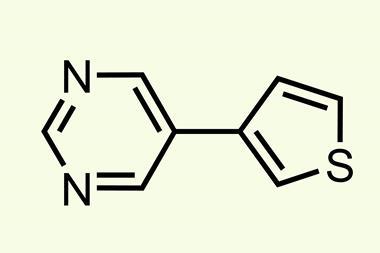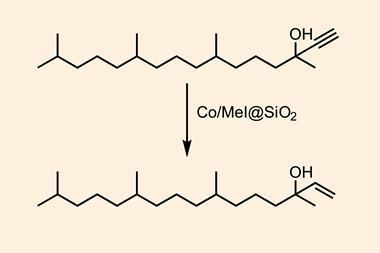Eight years’ work yields Mitsunobu chemistry with nothing but water as a byproduct
UK researchers have updated a key reaction in the chemistry toolkit, making nucleophilic substitution reactions of alcohols cleaner than ever. Currently, the best Mitsunobu coupling processes have moved on from using stoichiometric amounts of phosphine and azo compounds (and producing corresponding amounts of phosphine oxide and hydrazine waste), to using catalytic amounts. However, those catalysts must cycle between oxidised and reduced forms, and therefore need large amounts of oxidants and reductants that are compatible with each other in the reaction mixture.
Now, a team led by Ross Denton at the University of Nottingham has designed a phosphine oxide catalyst that doesn’t need oxidants or reductants, and dispenses with the azo reagent entirely, producing water as the only byproduct. The approach also has significance beyond the Mitsunobu reaction, Denton tells Chemistry World. ‘Since there are, in principle, lots of other nucleophiles and new catalysts based on our design, this potentially opens up many new catalytic coupling reactions using alcohols as feedstocks,’ he says.
Denton’s team has been working for eight years to make classical phosphorus-mediated reactions catalytic. This included seeking a Mitsunobu system where phosphorus’ oxidation state remained constant.
The researchers activate the phosphine oxide catalyst with acidic protons from the intended nucleophile in the substitution, then dehydrate the catalyst so that it forms a ring structure. This process cleaves a strong phosphorus-oxygen double bond, which is difficult. However, it had previously been done with phosphine oxides containing phenol groups, which Denton’s team adopted. An alcohol molecule can then attack and attach to the catalyst’s phosphorus atom, reopening the ring. The deprotonated coupling partner, now more nucleophilic, can then attack the resulting alkoxyphosphonium salt, producing the desired product and also regenerating the catalyst.
The reactions the team has demonstrated using the catalyst include highly stereospecific ester and sulfonamide formation as well as couplings to yield sulfonate esters. The approach can be used to invert the stereochemistry of an alcohol group on a steroid molecule, and perform the first step towards tuberculosis drug thiocarlide. The biggest challenge is that the nucleophilic coupling partners need to be acidic, Denton says. ‘However, if they are too acidic then the scope of the couplings becomes very limited as other unwanted reactions then compete with catalysis.’
‘This paper offers a beautifully simple solution to a longstanding challenge in the synthetic and green chemistry communities,’ comments Joseph Moran from the University of Strasbourg, France. He hopes that the phosphine oxide ‘will be commercialised to speed the replacement of the classical form of the Mitsunobu reaction’.
Denton adds that the catalyst can be made very easily on gram scale without chromatography. ‘We are looking to get someone to supply it,’ he says.
References
R H Beddoe et al, Science, 2019, DOI: 10.1126/science.aax3353














No comments yet